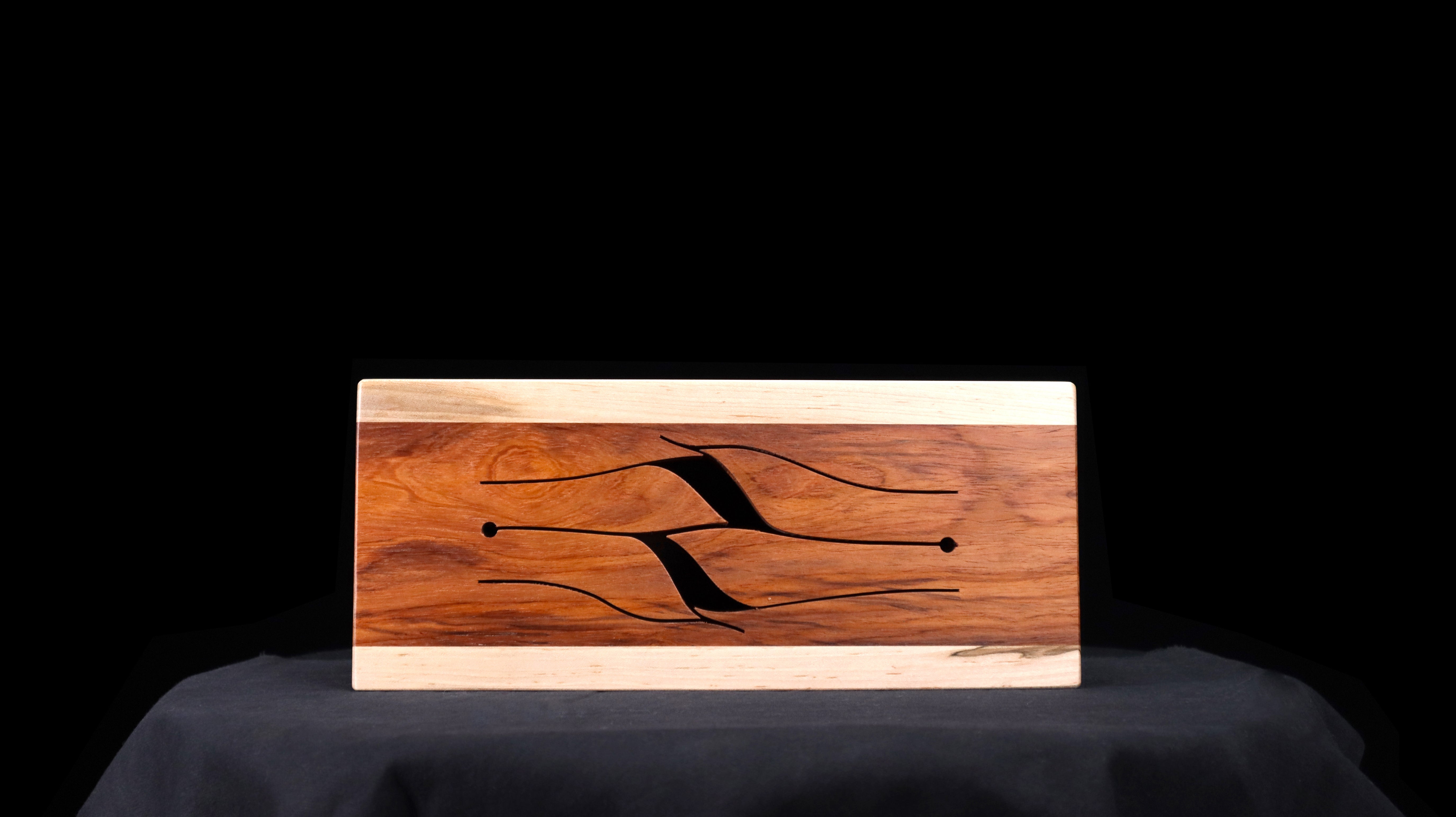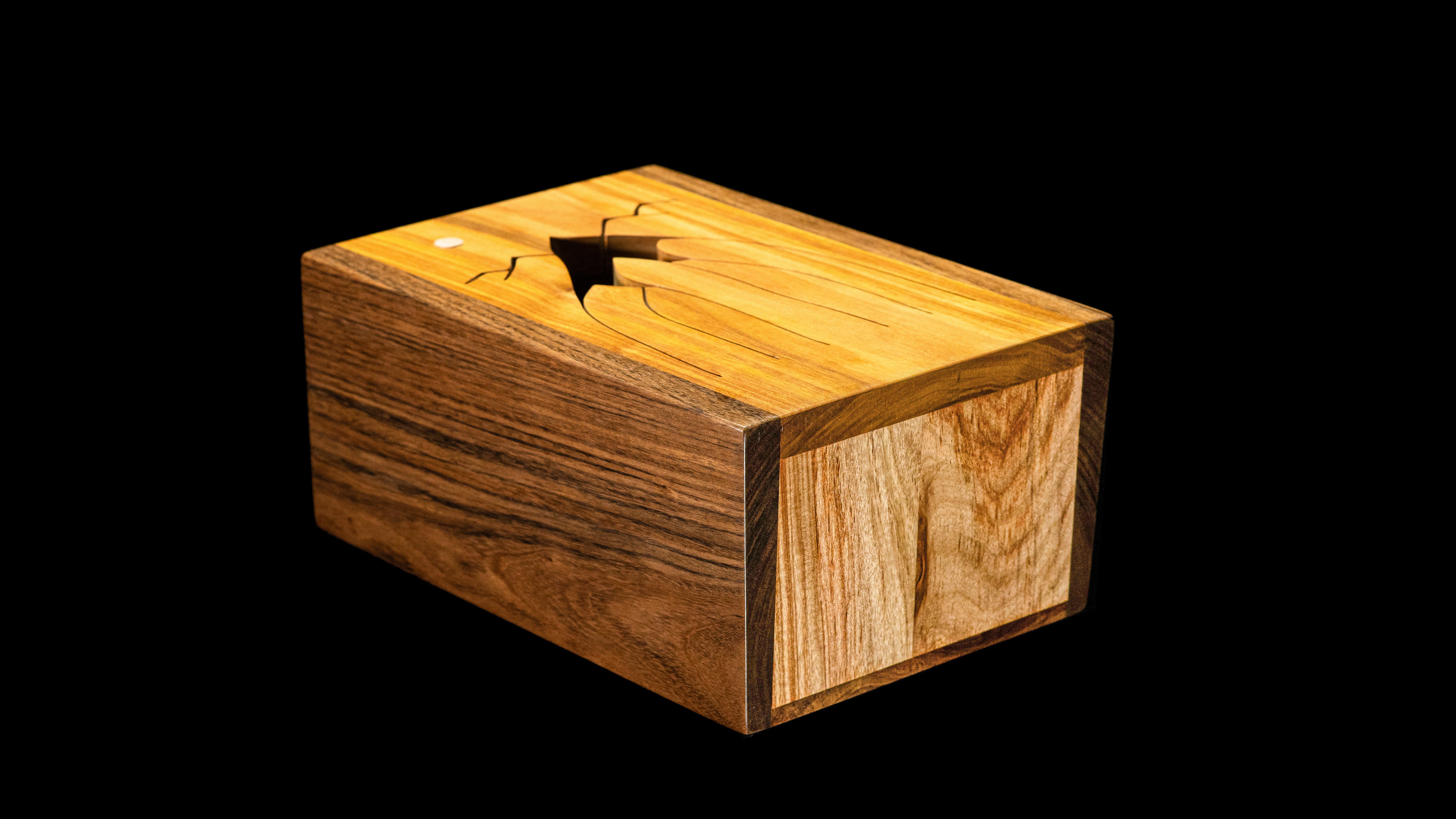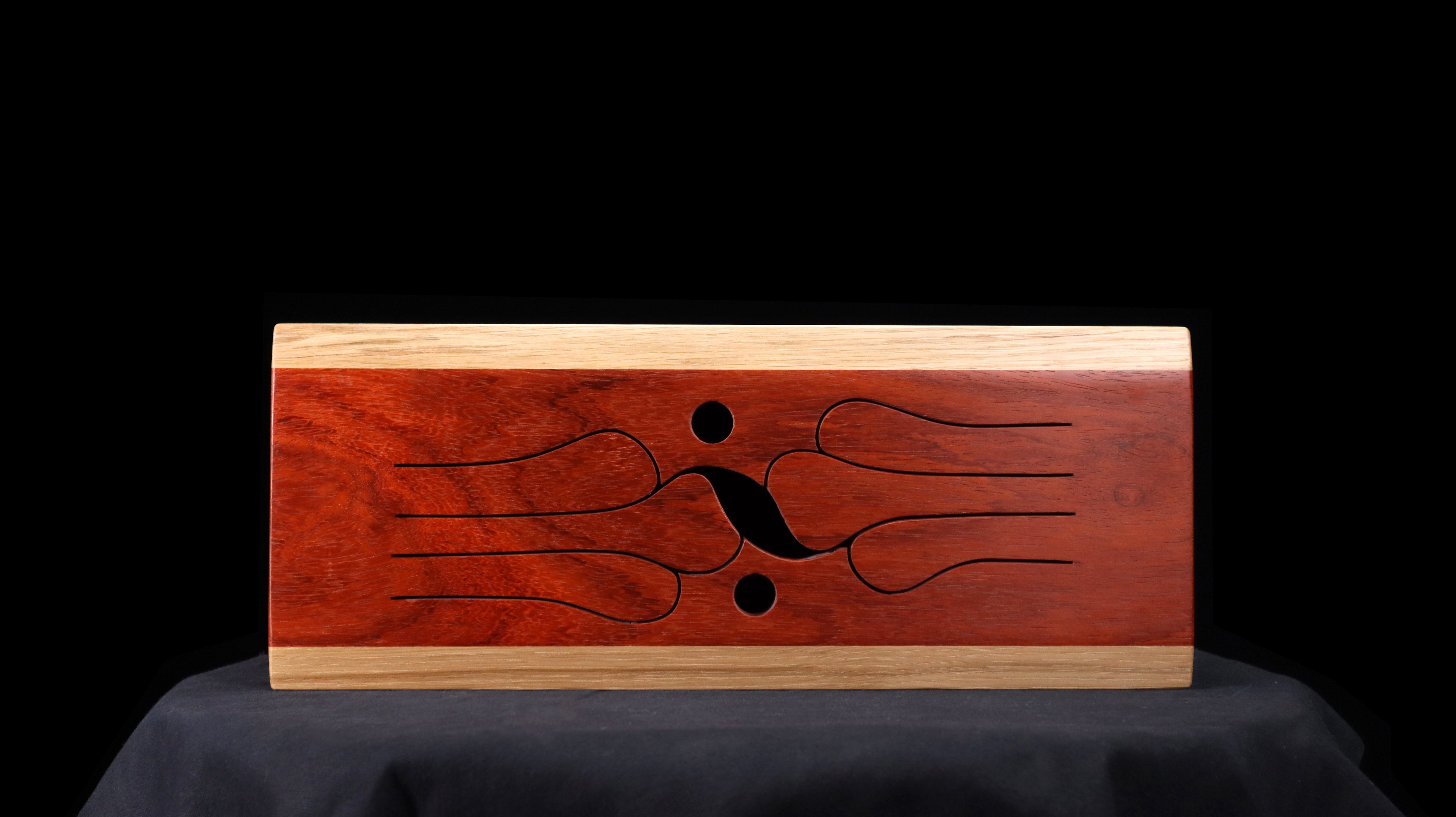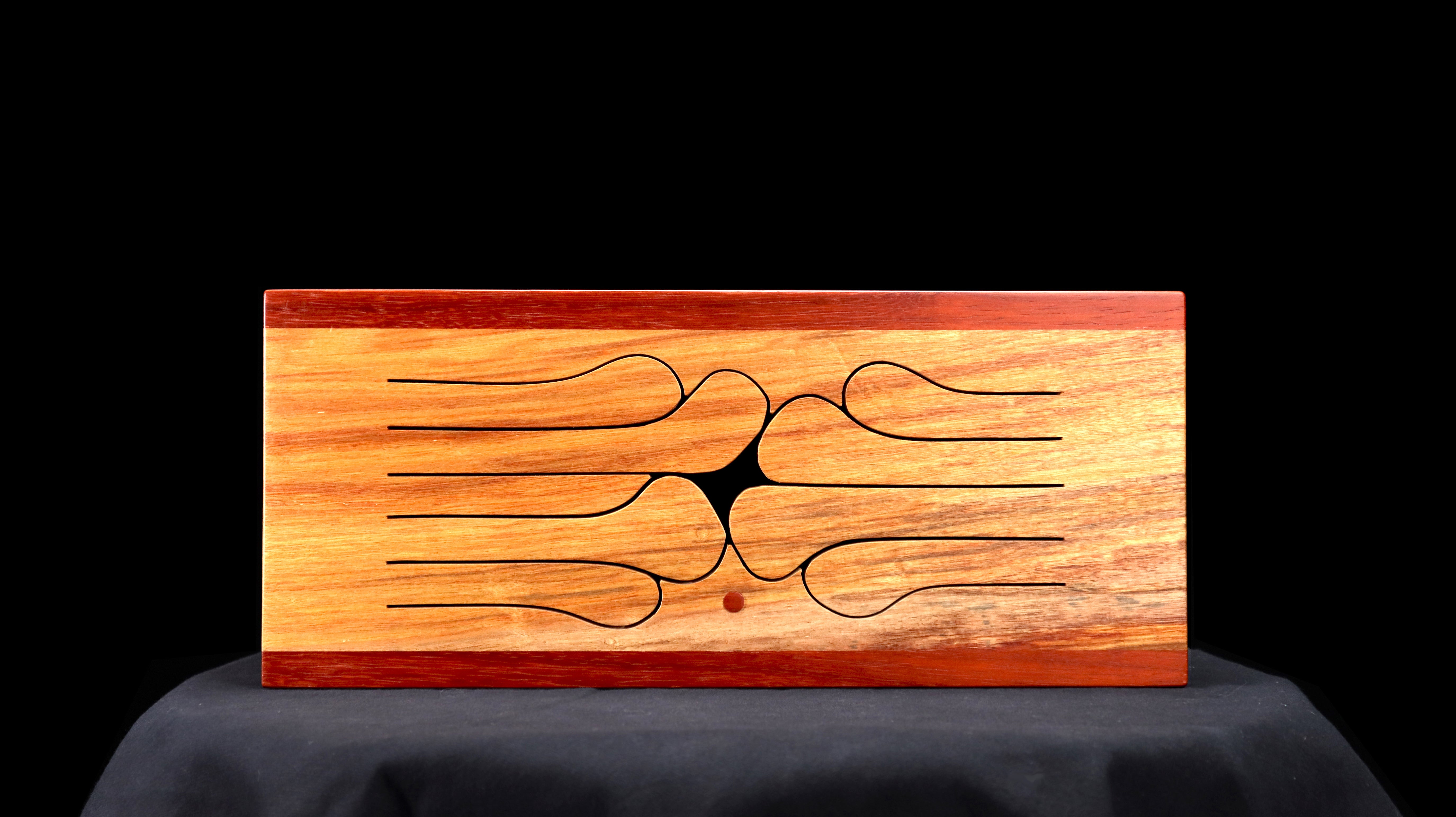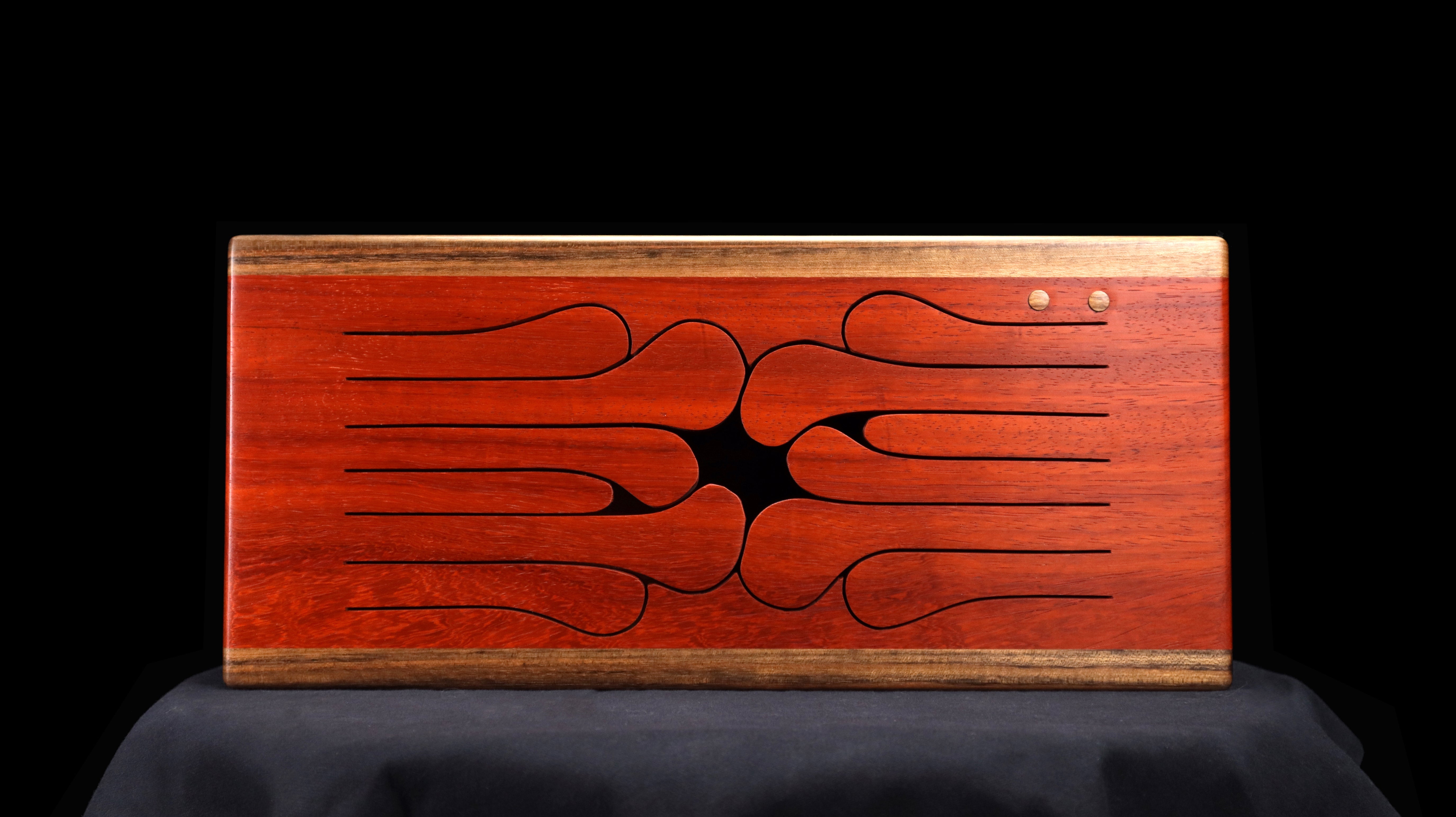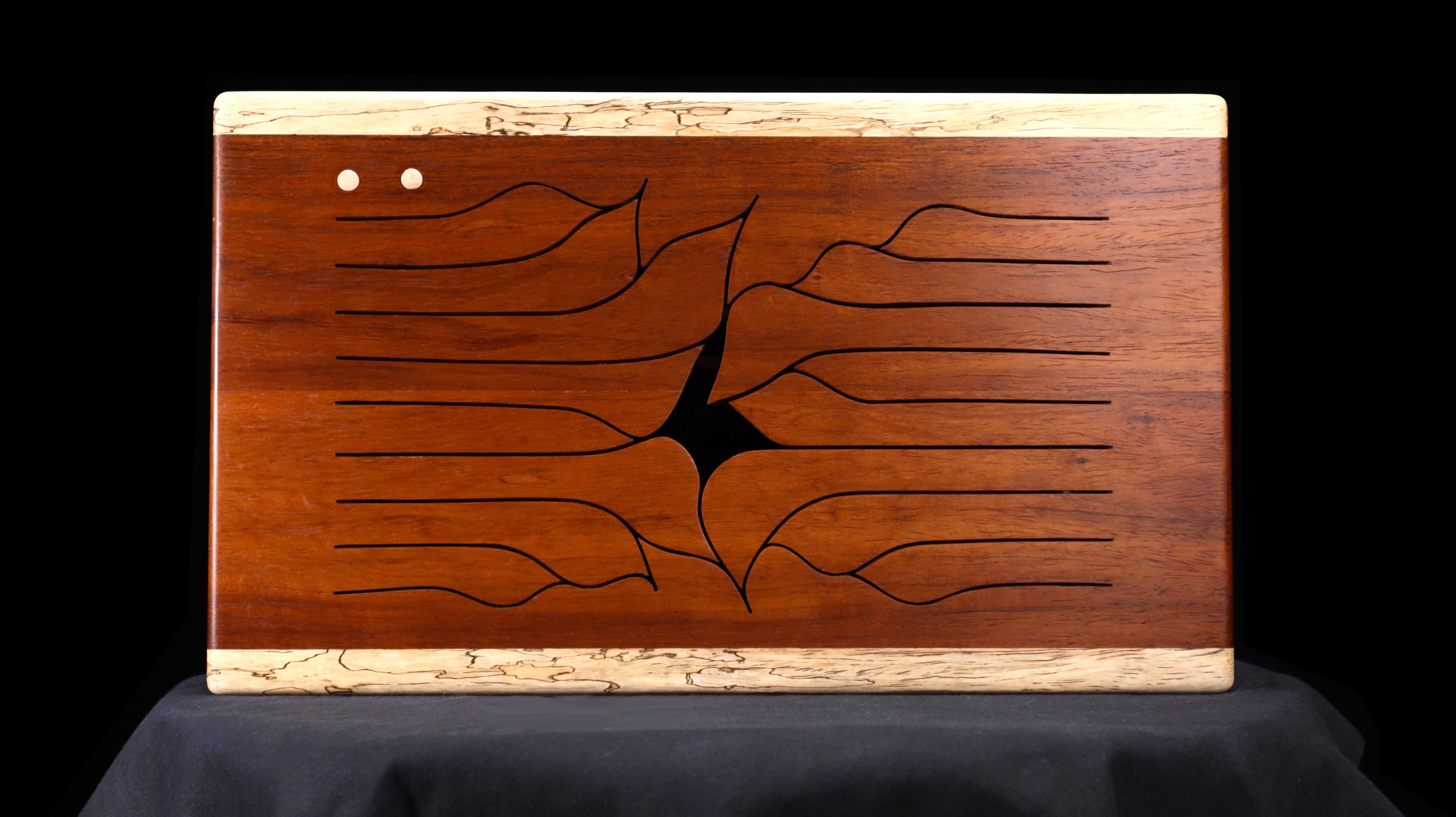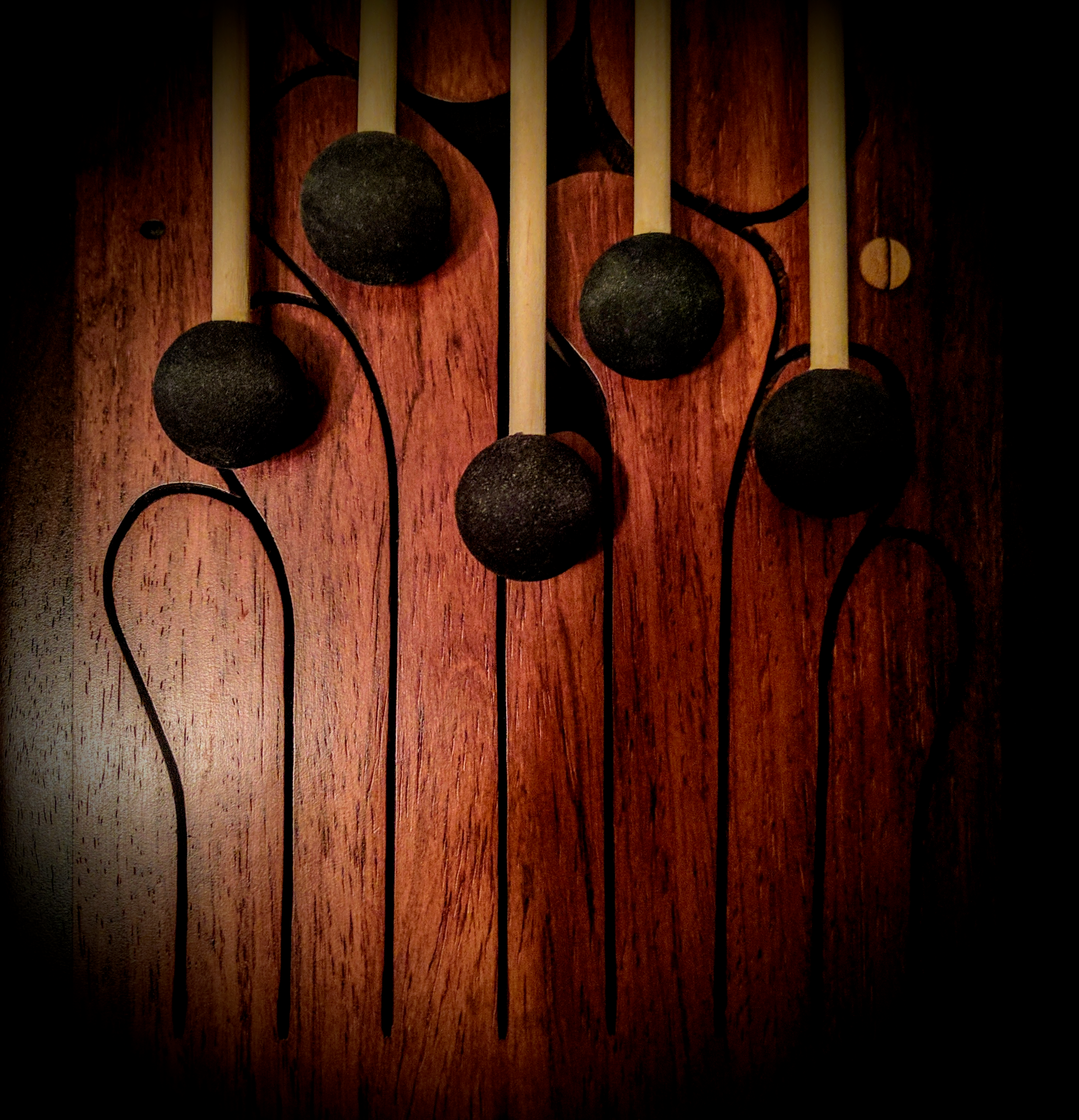We are excited to introduce you to your new instrument! Your drum is a box. It has a face, sides, and a bottom. In the face of the drum are carved tongues, each of which “plays” a musical note. To play these notes, you will simply need to strike the individual tongues with mallets, your hands, or fingers. If you’ve obtained a drum with dots, well, those are just dots. They don’t turn on the music - that’s your job!
Getting To Know Your Drum
Caring & Cleaning
1
Store your drum in a temperate environment indoors. Avoid storing your instrument in direct sunlight, or areas of extreme heat or cold, as this can affect both the color and condition of the wood.
2
Do not stack things atop your drum, stand, kneel, or lean on the tongues. Also applies to traveling.
3
Remove dust from your drum by wiping down occasionally with a microfiber cloth. Condition every few months or as desired with a soft cloth and pure lemon oil polish (for wood). For best results, avoid synthetic cleaners.
Playing Your Drum
Playing With Care
Only play your drum with the included mallets, your hands, or fingers. Replacement mallets can be purchased in our online store here.
When playing with mallets, playing with an easy tapping motion will result in the best sound. Striking the tongues hard or aggressively can cause damage to the microfibers of the wood resulting in a buzzing, muting or deadening of the tones on your drum. Thus a light touch is the way to play.
We encourage you to experiment playing with your hands or fingers! This type of play opens the possibility for fresh rhythmic patterns and warmer tones.
Sharing Your Music
We love sharing music with others and expect you will too! It is important you take the time to show anyone new to your drum how the instrument should be played.
For children, we describe our drums as being made from a "glassy" wood that must be played gently, and encourage them to play with their hands (without mallets). We suggest storing mallets away in a drawer and only bringing them out under supervision.
If you plan on using your instrument in a drum circle, we recommend playing exclusively with the hands, in order to avoid striking your drum too hard with mallets.
Want Some Pointers?
Where you set your drum up matters! The bottom of your instrument plays an important role in its tonal resonance. Setting the drum on soft surfaces, such as carpet or a blanket will dampen the tone.
If you take a single mallet, and gently tap on each of your drum’s tongues, you will notice that each tongue has a sweet spot, and that the timbre varies when tapping different sections of each tongue (see the picture below!).
Fun fact: the timbre is the quality of the musical sound or note!
TIP: set your instrument...
- on a firm surface such as wood or stone
- rested across your open lap
TIP: with either hands or mallets...
- try alternating taps between your right and left hand, playing with a steady back & forth "walking" pattern
- experiment with different sequences of notes and see what speaks to you
- check out the possible dyads by playing combinations of any two notes at the same time
Fun fact: a dyad is a pair of notes played together, similar to a chord (which is three notes)!
Remember that, by tuning and design, there is no wrong way to make music on an HMC tongue drum. Even after nearly 50 years on this journey, we see people discovering new ways of playing their instruments every day.
For any additional questions, always feel free to contact us.
